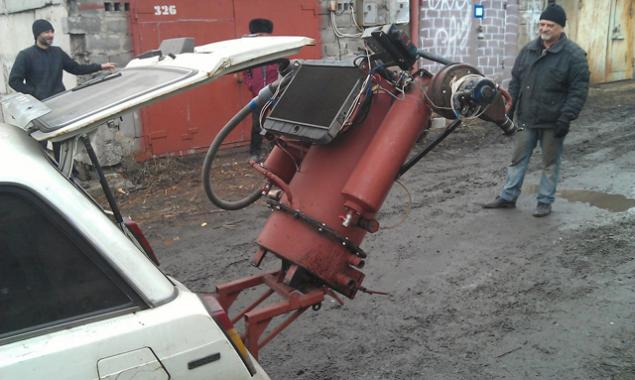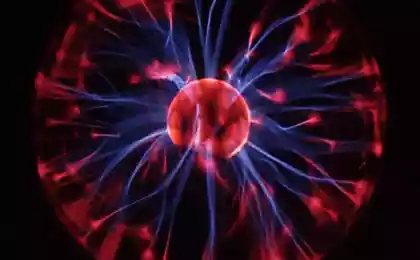751
Hydrogen production using machines with wood

known - production of hydrogen from water is energy-intensive process. On the evolution of hydrogen need to spend 3-4 times more energy than we then get a dedicated hydrogen. For this reason, fuel cell cars are complicated and expensive ($ 60,000), and the production and storage of hydrogen is a whole industry that is unlikely to become a mass coming decades.
Here I want to talk about a possible method of producing hydrogen by using automotive gas generator and associated use it to drive the car on the wood - thus increasing the engine power and reducing wood consumption.
Where to take power in the splitting of water
When the car stands out a lot of the gas generator of heat. On average, the combustion of 1 kg of firewood (averaged data) stands 4kW of energy. Four Lada hour burns from 20kg of firewood, gas 24 - from 35kg.
The gas temperature of the reactor about 900 degrees, at the outlet of 100-400 hopper (hopper dissipates heat to the atmosphere).
From myself I will say that during his four tests on the wood for the heat meter from the gas generator was standing near the red-hot stoves. In general, heat is discharged into the atmosphere much. Plus we have to cool the gas to the maximum also forced dumping kilowatts of heat into the atmosphere.

You can try to use that energy to good use - making it with the help of hydrogen.
This will help us to iron shavings or old hardware (nails, screws, nuts).
Removing heat from the walls of the gas generator (this can be done both outside and inside) we make two useful things - cool final gas which is to flow into the engine as much as possible with cold (for filling cylinders richer mixture) and simultaneously increase the percentage of efficiency of gas in mixture.
By heating the water to the state of superheated steam (testing in the USSR for gas generators with water supply showed that the optimal temperature is 300 degrees) we pass it through any hardware. It is desirable that it is finely chopped up - the optimum size of the "chips". This is due to an area of the surface tension (large gap is bad).
Oxygen loves iron, passing through superheated steam we besieged oxygen on iron and get a large amount of the separated hydrogen. The hydrogen is piped to the carburetor car mixed with gas made of wood.
Rust deposited very simple - while driving the car shakes and a box of rusty metal products precipitating shake the rust on the bottom - all you need to do is welded ball valve at the bottom for the shedding of rust or washing. i>
Even a slight increase in efficiency of gas as part of the wood gas will significantly increase the power of the engine.
Here is a useful part of the gas from the fact that the engine sucks.
Methane 1-4%
Carbon monoxide 16%
Hydrogen 13%
Other ballast gases - carbon dioxide nedoreagirovavshy about 5%, nitrogen 50-60%.
We see that the gas efficiency of about 30%, the remaining 70% go to waste engine occupying unnecessary space.
For this reason, the car on the wood (in the article in question is of wood as a fuel without taking into account the charcoal or stone everything differently) lose up to 35% of the power from the gasoline.
Now, we can increase the number of available gas.
But again, there are some "buts". The fact that a large amount of hydrogen is detrimental to the pistons. Hydrogen gas is very rapid propagation of the flame front is 5-6 times faster than methane. Methane "slowly" turns for this reason in the translation machine methane must exhibit more than a pre-ignition gasoline by at least 10 degrees otherwise some methane will not burn in the cylinder, and the exhaust pipe.
Hydrogen on the contrary good for the hydrogen bomb with fast devastating effect, but it affects the motor is bad - may have micro-cracks in the pistons and other parts.
I would raise this issue in dialogue with local academics and they led me to the idea of covering the inside of the engine nanomaterials. Some of them have developed a mixture that covered parts of the engine with a protective film that could help protect the engine from the destructive properties of hydrogen. But this theory is not yet proven practice - if any of the readers know about the used method of protection against this effect - write.
I look forward to useful tips.
Source: geektimes.ru/post/262372/
Projects lunar bases: Yesterday and Today
The underground magma ocean explains the volcanic activity on Io























